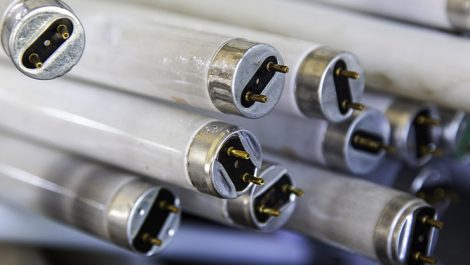We’ve known for a while that polyvinyl chloride (PVC) is a seriously uncool material to print on, but there is still an awful lot of it about. Despite the environmental nastiness of PVC, which cannot be recycled, it works extremely well in many print applications mainly because it is cheap. Banners particularly are often printed on PVC for indoor and outdoor use. They are strong, durable, lightweight and weather resistant, so they are still widely used and plenty of printers are available to produce them. But not for long.
In May 2019 the Basel Convention classified waste PVC as a notifiable material. From 1 January 2021 movement of PVC, for instance to the dump, must be notified and extensive paperwork completed. The paperwork must specify all points through which the waste PVC will pass and fees are involved, based on the volumes and the frequency of shipments. Failure to comply will incur fines.
This is good news for the environment and also for print’s sustainability. According to Wikipedia about 40 million tonnes of PVC are produced each year and it is the world’s third most widely used polymer after polyethylene and polypropolyne. It’s used everywhere from doorframes to piping and packaging and signage. But even though it is useful it is also a highly toxic material to produce, use and dispose of. Greenpeace calls it the ‘Poison Plastic’ because from its production to its end of life, PVC releases a variety of toxic chemicals into the environment. And as is the way with environmental toxins, these chemicals are building up in our air, water and foodchains. This is serious stuff because besides harming the environment, chemicals released from PVC disposal can be directly injurious to human health.
That PVC is now considered a notifiable material is good news, although perhaps not if you’re in the business of buying or producing printed PVC banners and signs. Clearly the new rules will have a particular impact on sign and display makers and their customers who will have to either go with the red tape or choose some other substrate for their work. The new rules will also make PVC much more expensive to use, but that is part of the intention. Environmental rules are designed to change behaviours and in the case of the Basel Convention on PVC, will encourage companies to look elsewhere for their banner and signage substrates. This is most likely to raise the profile and use of textiles as an alternative, so we can expect to see a glut of new textile based substrates come to market. These will offer equivalent benefits to PVC but will not come under the purview of the Basel Convention, be impossible to recycle or dangerous for human health.
– Laurel Brunner
This article was produced by the Verdigris Project, an industry initiative intended to raise awareness of print’s positive environmental impact. This weekly commentary helps printing companies keep up to date with environmental standards, and how environmentally friendly business management can help improve their bottom lines. Verdigris is supported by the following companies: Agfa Graphics, EFI, Fespa, Fujifilm, HP, Kodak, Miraclon, Ricoh, Spindrift, Splash PR, Unity Publishing and Xeikon.





